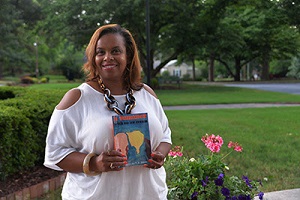 Special to the Philanthropy Journal
Special to the Philanthropy Journal
By Jessica Haynie
Human beings have always turned to nature for answers. Leonardo da Vinci studied birds and translated what he learned into plans for a flying machine. The designs of architect Antoni Gaudi were influenced by his study of tree trunks and the human skeleton. The modern term, biomimicry, has become somewhat of a buzzword these days – especially with growing discourse and concern about the disconnect between society and nature. We hear more and more about biomimicry in technology and design, but can turning to nature also advance social innovation?
Biomimicry has existed for centuries, but Janine Benyus’s 1997 book Biomimicry: Innovation Inspired by Nature is credited with bringing the concept to prominence and generating a new field of study. A useful definition of biomimicry is “the design and production of materials, structures, and systems that are modeled on biological entities and processes” – essentially, a process for copying nature. Biomimicry asks, “What would nature do?” In his book Incognito, David Eagleman takes a stab at answering that question: “Biology never checks off a problem and calls it quits. It reinvents solutions continually. The end product of that approach is a highly overlapping system of solutions – the necessary condition for a team-of-rivals architecture.”
Modern-day examples of biomimicry include Velcro (patterned after burrs), bullet trains (streamlined in front like kingfishers’ beaks, to reduce friction and noise) and racing swimsuits inspired by shark skin. However, we are also seeing biomimicry applied to a range of social challenges including climate change, energy efficiency, and human safety. The human lung’s capacity for filtering carbon dioxide has inspired new technology for fighting pollution. An air conditioning system modeled on the self-cooling mounds of termites has dramatically reduced energy use and costs. Studying how dolphins communicate underwater has led to the development of a new tsunami early warning system. Biomimicry for Social Innovation, which aims at “applying nature’s genius to leadership, social change, and organizational development,” is studying nature’s self-organizing and interdependent networks in order to answer questions like: What can a forest ecosystem teach us about cooperating within a diverse community? What might we learn from insect colonies about working collaboratively?
Meanwhile, organizations focusing specifically on biomimicry are sprouting up as well. Biomimicry 3.8 provides consulting and professional trainings. The University of Akron’s Biomimicry Research and Innovation Center partners with Great Lakes Biomimicry to promote research, design and teaching. The Biomimicy Institute, co-founded by Janine Benyus, works to “naturalize biomimicry in the culture by promoting the transfer of ideas, designs, and strategies from biology to sustainable human systems design.”
With this expanding influence of biomimicry on commercial, technological, and organizational theory and practice, it should be no surprise that the concept has also begun to inspire new ways of thinking about social innovation. For instance, The Ray C. Anderson Foundation has partnered with the Biomimicry Institute to launch the Biomimicry Global Design Challenge, dedicated to applying biomimetic solutions to global food security challenges and creating companies that work in harmony with nature. According to John Lanier, the Foundation’s executive director, “Biomimicry has phenomenal applications when it comes to technological innovations, but it has so much more to offer. Nature builds and tweaks systems to create efficiency, resilience, and biodiversity. I believe when it comes to addressing social challenges we can look to nature for its systems.”
Lanier and others hope that, just as funders are recognizing how areas such as human health, social justice, and education intersect with environmental concerns, they will also begin to recognize how the lessons we gather from our environment can impact those issues. This makes perfect sense. Social innovation involves identifying a problem, developing ideas, then continuously testing and retesting until sustainability and scalability can be achieved to create systemic change. Throughout the entire process, “What would nature do?” offers the opportunity to access what Biomimicry 3.8 calls “nature’s 3.8 billion years of brilliant designs and strategies.” Rather than asking what isn’t working, we can ask what is working – indeed, what has been working for eons? Respect for nature’s central dynamic, evolution, can help organizations overcome institutionalization in their structure and programs that may be stalling progress. Understanding local ecosystems can help social innovators anticipate whether or not a model of intervention that may have succeeded in one context can necessarily be transplanted to another. The efficiency of biological organisms and natural systems can guide allocation of resources and efforts to prevent waste.
As Roshan Paul and Dharshan Wignarajah write in an article for the Stanford Social Innovation Review: “If we are going to improve our capacity for innovation, we first need to deepen our own connection with nature. If we foster new skills, tools, and techniques to explore and unearth the latent knowledge within and around us, then we can tap into a whole new source of ideas and inspiration for people solving social problems.” Anyone who loves getting out to play and breathe in the open air knows how nature can ground us, energize us, and help guide us to clarity. However, biomimicry can help us take that connection with nature beyond the personal, making it practical and actionable towards important goals. Connecting with nature then becomes a process of open-minded investigation, resilience and continuous adaptation – all of which bring us closer to tackling the biggest challenges facing our world.
Jessica Haynie MBA is the CEO of Three Stones Consulting, a fundraising and strategy firm for the social sector based in Santa Fe, NM. Her strong commitment to the sector is reflected in a decade of experience working for organizations in a variety of fields, ranging from higher education to the performing arts to grassroots environmental conservation. She holds an MBA from Syracuse University and is currently considering PhD programs in Public Administration & Policy.




